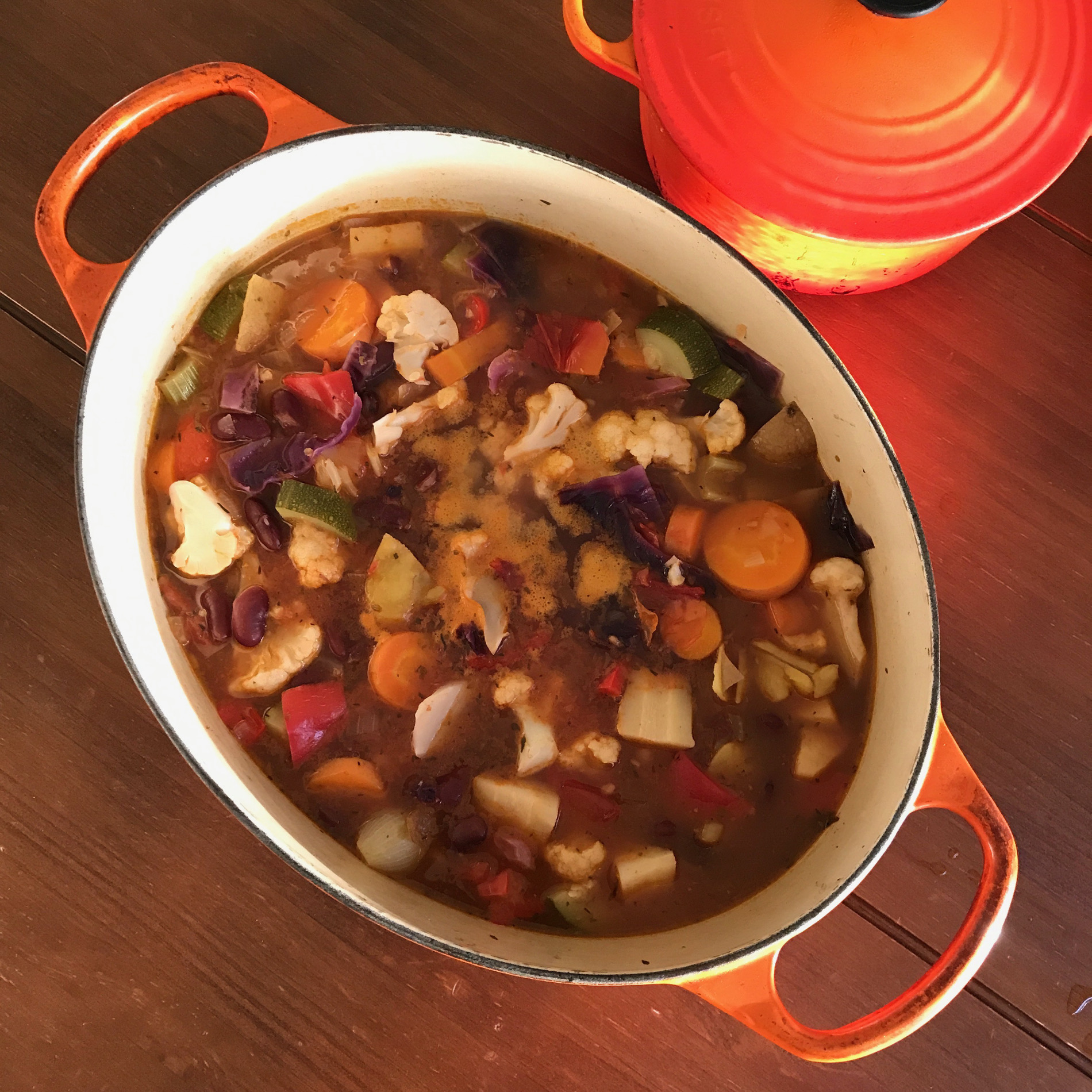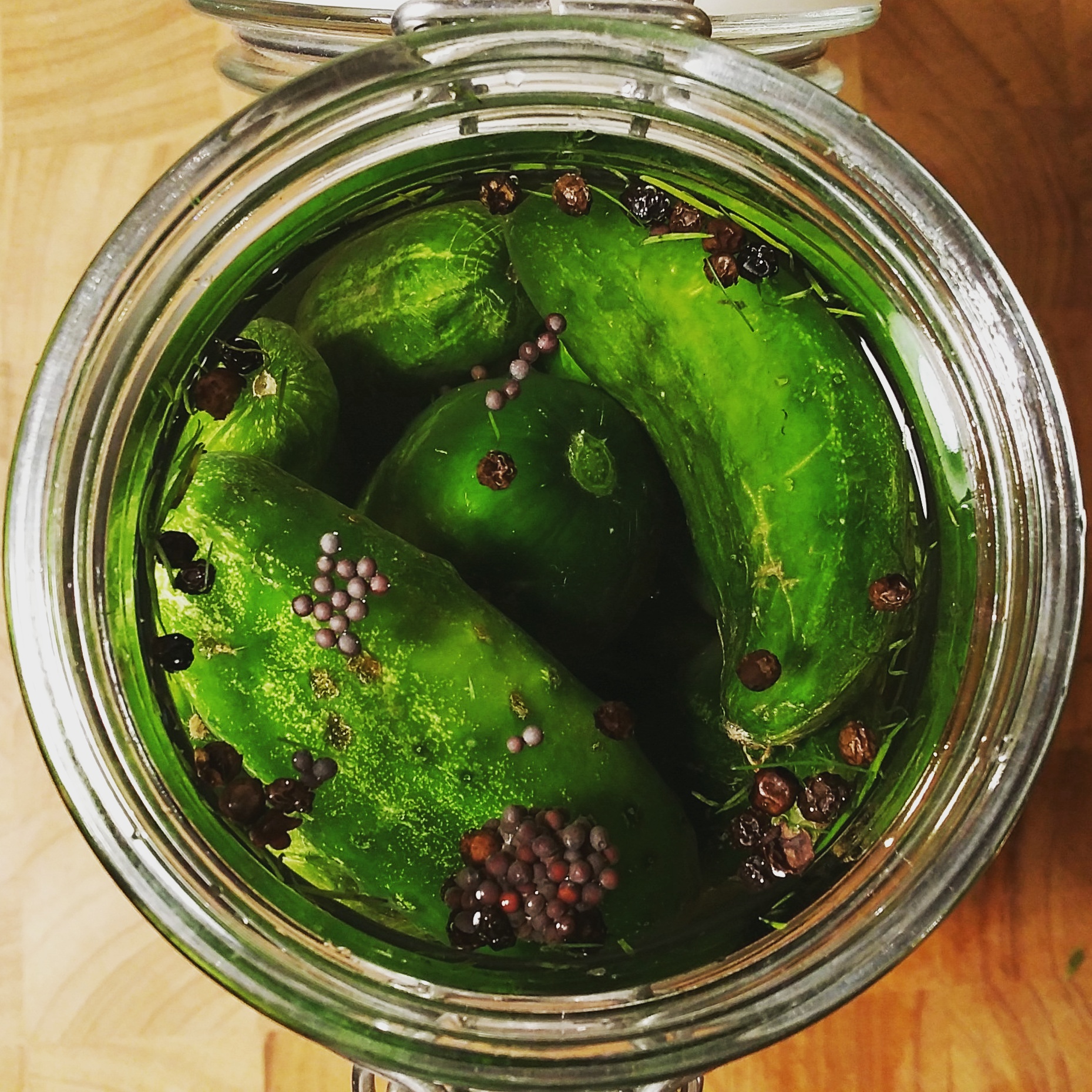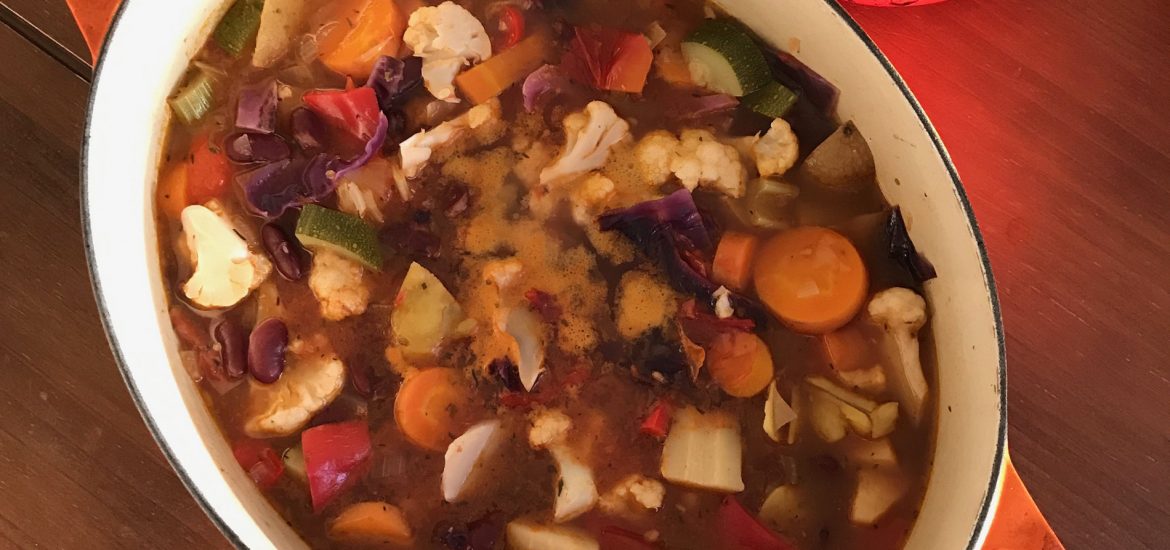Updated 01/05/24
Here in the U.S., food-related energy accounts for about 16 percent all the energy we consume nationally. That energy includes all the steps in the food supply chain—growing and processing the food, packaging it, shipping it, storing it, preparing it and handling all that food we waste.
This post focuses on reducing food-related energy consumption at the consumer level. Many of these energy-saving ideas also happen to save money and time. Who doesn’t want that? (You can read a post about time-saving tips here.)
To give you an idea of the amount of energy required to power even a small appliance—and to motivate you to continue to read the 21 energy-reducing tips below—watch this short video of an olympic cyclist versus a toaster. It’s slightly terrifying…
Plan ahead
1. Soak grains and dried beans to slash cooking times. I love steel-cut oats but they cook for a long time—about 45 minutes. If you start them the night before though, you just bring them to a boil, turn off the heat and let them sit all night to finish cooking. In the morning, heat them up. (Here’s the recipe.)
2. Thaw frozen food out in the refrigerator before cooking it or heating it. To cook tomato-based dishes in the winter, I grab a jar of the tomatoes I roasted and froze in the summer and thaw them in the refrigerator the night before I need them. Frozen food requires more time and energy to heat or cook than cold or room-temperature food.
Refrigerate wisely
3. Close the door. We all know not to stand in front of the refrigerator, door wide open, gazing at its contents hoping to find something tasty, wasting energy.
4. Keep it in the cupboard. Many foods we tend to refrigerate (e.g. mustard, soy sauce, hot sauce) don’t need refrigeration and many foods should not go in the refrigerator at all. Keep tomatoes in there only if you want to render them flavorless. Store potatoes and onions in a cool place other than the refrigerator and separate from each other as onions can impart strong flavors onto potatoes. Bread dries out in the refrigerator so keep it at room temperature. (For info on storing produce, see this post.)
5. Cool it. Allow hot foods to reach room temperature before storing them in the refrigerator or freezer. If you put hot food in there, your appliance has to work harder—and consume more energy—to cool down the food.
6. Adjust the temperature. According to the USDA, most food keeps well at a temperature below 40ºF. If some of your food freezes in your refrigerator, you have set it too low (food freezes at 32ºF). Consumer Reports suggests a temperature of 37ºF.
7. Downsize. If you’re in the market for a new refrigerator, opt for a smaller energy-conserving one. A smaller refrigerator can also improve your health and reduce food waste because the larger the refrigerator, the more food you buy, the greater chance you’ll overeat, and the more likely some of all that food stashed in there will turn and end up in the trash.

Cook efficiently
8. Use induction. I have a portable induction cooktop I use for workshops—and for everything at home. I love it. It heats much faster than my methane (gas) oven and emits zero fumes. Go here for more on induction cooking. And go here for how to switch from a gas range to induction-electric.
9. Put a lid on it. Lidded pots retain the heat inside and bring water to a boil quicker. Most people know this one and I almost didn’t include it. But I think it’s worth repeating.
10. Go small. Use a smaller pot if possible and make sure to heat it on a smaller burner. A big burner consumes more energy than you need for a smaller pot.
11. Heat less water. If you need water for one cup of tea, boil water for one cup of tea, not seven. Conventional wisdom says you must cook pasta in a large amount of boiling water. Actually, you can cook it in a small amount of water and it doesn’t have to be at a rolling boil. You conserve both energy and water with this one.
12. Turn down the heat. Once your pot of water has boiled, turn down the heat a bit—let’s say to medium depending on your stove. You don’t need the gas (or electricity) cranked up all the way to continue boiling the water.
13. Add some pressure. Use a pressure cooker but only if you want to save hours of time in the kitchen and cut your energy consumption by at least half. I know I gush about my second-hand pressure cooker on here constantly…Can you blame me? Soaked beans cook in mere minutes. Here’s how I use mine.
14. Use a slow cooker. These appliances consume little energy and you can walk away from them while they cook your food. Here’s a post on cooking beans in one of these.
15. Double a recipe. Cooking a vat of soup on top of the stove doesn’t require much more energy than cooking a small amount. (Plus you’ll cook less often and save time.)
16. Prep first. This one depends on your cooking style. If you can chop efficiently like a pro, you may want to heat up your oven and start boiling water before you prep ingredients. For many of us, prepping and measuring before turning on the heat will conserve that energy until we need to use it.
17. Cut it up. When you cook that vat of soup, chop the vegetables into smaller pieces. They’ll cook faster.
18. Choose heat-retaining pots. When you need new pots, consider investing in cast iron (enameled or not). Cast iron retains heat really well. If you cook a vat of minestrone soup, for example, in a cast iron pot and set it on the table for dinner, the soup stays hot during your meal.
I love, love, love my Le Creuset pots and pans. I own five of them but bought only one. One was a gift and three others came from a generous neighbor. He found them too heavy. When my daughter went away to university in Canada, I bought her a Cuisinart enameled cast iron Dutch oven. She uses it constantly and it cost much less than a comparably sized Le Creuset.
19. Cook a bunch of food at once. If you have the oven on for roasting vegetables, cooking a pot pie, making macaroni and cheese, baking a loaf of bread—whatever—throw something else in there, maybe some quick bread, muffins, crackers…those potatoes that need using up… On the other hand, if you have a toaster oven, use that to cook something small.
20. Avoid frozen entrees. Not only do these consume a lot of energy to cook—actually, heat because opening a frozen package and stuffing it into the oven is not cooking—they have tons of wasteful packaging, they contain dubious ingredients and they often cost quite a bit of money.

Go off the grid
21. Harness the sun. I enjoy playing around with the solar food dehydrator we have here at the intentional community where I live. You can read about that here and here. Most people don’t have a solar food dehydrator lying around but a reader sent me a link with instructions for dehydrating food in the car on a hot sunny day. (So cool!)
22. Let the microbes do the cooking for you. Fermented foods consume very little—if any—energy to prepare. To make my fermented salsa, for example, I merely chop and salt all the vegetables—tomatoes, onions, bell peppers, jalapeño peppers, garlic, cilantro and so on—pack them into jars and set those out on the counter at room temperature for a few days while the food ferments. I don’t cook anything. I don’t turn on a burner.
Fermented foods in my recipe index that require zero energy to prepare:
- Beet kvass
- Bloody Mary
- Off-the-grid kombucha
- Mead
- Cultured buttermilk
- Crème fraîche
- Sour cream
- Fruit chutney
- Preserved lemons
- Fruit scrap vinegar
- Watermelon rind pickles
- Dill pickles
- Hot peppers
- Kimchi
- Salsa
- Sauerkraut
- Garlic-dill sauerkraut
- Fermented tomatoes



We keep our bread in the refrigerator BECAUSE of the drying effect: When we kept it at room temperature, it got moldy before we could eat it all, so that was wasteful.
Ahhh. Yes, I would take stale over moldy too!
Just found your blog and am really enjoying reading. Love these energy and time saving tips as I am usually cooking with two toddlers clinging to me! Thanks for writing!
Hi Kelsey, hahaha, my kids are big but I remember well those days of clinging toddlers! I’m glad you find the tips helpful. Thanks for reading 🙂 ~ Anne Marie
[…] of excellent tutorials on plastic-free kitchen activities (like freezing food without plastic and reducing energy use in the kitchen). I would recommend starting with her last post of 2017, on going plastic-free in 2018 — […]
[…] Kitchen appliances are attributed to using 20% of the household’s energy. […]
While trying to keep raw goats milk as fresh as possible I found that placing ice in a bowl in the frig keeps the frig motor from running as often. Don’t know why I didn’t think of it before!
Hi Anne Marie, thankyou for your post. 1) Recently I had the eureka moment that I could cook tomatoes for ages to make sauce, in my slow cooker. I left it with the lid off to steam a couple of times, and I now have a lot of dark, intensely flavoured sauce. My oven isn’t very efficient and it heats the whole room when it’s on, so it’s fab to avoid this. 2) Also I always bottle my tomato sauce (the way my mum used to bottle jam), that way it doesn’t need to sit in the freezer. 3) I’ve never yet tried canning, but I think I need to learn that next. 4)irrelevant but I just have to share – how to make apple juice without a juicer but with a few kids – I saw it somewhere and it’s mad – freeze the apples. Thaw the apples. Squeeze the floppy apples while gighling and (of course) put the remnants in your scrap vinegar jar. Mary
Hi Mary,
Thank you for all of these ideas! I’m going to cook some tomatoes in my slow cooker after I buy some at the farmers’ market on the weekend. That’s brilliant! It’s so hot here right now, I can’t turn on the oven but I can still use my slow cooker. Love your other ideas as well. I’ll try freezing some apples too. Thanks for sharing.
~ Anne Marie
My energy saving tips are to boil water in an electric kettle as it is faster and more energy-efficient than boiling on a stove, unless you have an induction burner. I use this pre-boiled water to cook pasta, other grains, or anything that needs hot water like a quick soup! In addition, once the water has been boiled, you can totally turn off the stove at this point and let the pasta or grain soak with the lid covered. It takes slightly more time than if the heat was on the whole time, but it is a method that works – and as a bonus, no need to watch the pasta as the pot is less likely to boil over!
Thanks for the tip, Leticia 🙂
Anne Marie